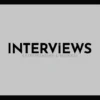Cracking the Code to Cash Flow and Passive Income: It’s Not Just a Dream
Who hasn’t dreamt of relaxing on a beach as money flows in? Passive income feels mythical. But do not worry, future mogul! It’s not just for tech bros in Silicon Valley. You can create income streams that work for you as you live your life.
1. Passive Income Generation: Making Money While You Sleep (Almost)
The key question: Can you buy a business that generates passive income? Yes, you can. Think of it as purchasing a money-printing machine (the legal kind).
Buying a Business for Passive Income
It resembles inheriting a lemonade stand. Instead of sticky fingers, you receive cash flow. Find a semi-autonomous business. You want to be the conductor, not the whole orchestra.
Passive Income from Dividend Stocks: Get Paid to Own
Let’s discuss dividends. Think of them as thank-you notes from companies in dollars. How do you achieve $1,000 monthly in dividends? AI estimates about a $300,000 portfolio, assuming a 4% yield. It’s like planting a money tree; initial investment yields regular cash.
Details:
- Target Portfolio Math: Aim for $12,000 yearly ($1,000/month). A 4% yield requires $300,000. Simple? Just need three hundred grand lying around… (kidding… mostly).
- Diversification is Your Friend: Don’t be a one-stock wonder. Spread investments across 20 to 30 stocks in 10+ sectors. Like building a diversified team – if one player fails, others can still score.
- High-Yield Hunting: Look for companies with strong dividend and growth histories. Seek reliability, not flash. Think workhorse, not show pony.
- Reinvest Those Dividends!: Reinvesting dividends fertilizes your money tree. It buys more shares for bigger future payouts. It’s a gift that keeps giving.
Dividend stocks can pay while you binge-watch shows. Remember, diversifying is key, and reinvesting acts as a raise for your future self.
Other Passive Income Streams: Beyond Stocks
Dividend stocks are nice, but many passive income options exist.
- Affiliate Marketing: Act as a digital matchmaker. Recommend loved products and earn commission from sales via your link. It’s like being the internet’s paid hype-man.
- Blogging (Your Own Blog): Convert thoughts into dollars. Start a blog, build an audience, monetize through ads or selling products. Warning: Writing skills are essential.
- Rental Properties: The classic method. Acquire property, rent it out. Easy monthly income. But be ready for leaky faucets and midnight calls (the fun of being a landlord!).
2. Identifying Cash Flow Businesses: Where the Money is Made
Want to identify a cash cow? Look for businesses that earn more than they spend. Genius, right?
Assets that Generate Cash Flow: The Money Machines
Consider these your personal ATMs, endlessly dispensing cash.
- Rental Properties: The classic again. Rent equals cash flow. Simple.
- Real Estate Investment Trusts (REITs): Like mutual funds, but for real estate. Invest in a REIT, receive dividends from properties held.
- Dividend-Paying Stocks: Circling back to dividend buddies. They provide cash flow and passive income.
Other cash flow sources include income ETFs, high-yield savings accounts (yes, they exist!), and index funds. Anything that generates cash without needing constant work.
“Cash Cow” Businesses: Mature, Milking Money
These are mature and robust businesses. Think Microsoft (MSFT) and Intel (INTC). They’re not just profitable; they’re cash cows, producing more money than they know what to do with. They reward shareholders with hefty dividends and can increase them due to abundant free cash.
3. Understanding Cash Flow: Follow the Money
Cash flow fuels every business. But what is it really?
Definition of Cash Flow in Buying a Business
When considering a business for purchase, cash flow isn’t just revenue. It’s earnings before interest, taxes, depreciation, amortization, and – importantly – owner’s compensation. It reflects raw earning power before everyone takes their share.
Free Cash Flow (FCF): The Real Deal
Free Cash Flow (FCF) is what’s available after paying operational costs and capital expenditures. It’s the true cash to use – pay dividends, buy back stock, or reinvest. High FCF indicates financial strength.
Check out these leaders:
- Apple (AAPL): FCF king with over $108 billion. They could likely purchase a small country.
- Microsoft (MSFT): Close behind with about $72 billion. They’re printing money in Redmond.
- Walmart (WMT): Even retail giants like Walmart earn serious FCF of roughly $17 billion.
Access to 3-6 Months of Cash: Your Financial Safety Net
Running a business without extra cash? That’s like tightrope walking without a net. Smart businesses maintain 3 to 6 months’ expenses. Rent, payroll, inventory – whatever. It’s your emergency fund, peace of mind, “oops-I-spilled-coffee-on-the-server” fund.
4. Achieving Specific Income Goals: Let’s Talk Numbers
Let’s discuss practicalities. Want to create passive income? Let’s outline it.
Making $1,000 a Month Passively
Apart from dividend stocks (that $300k portfolio), other ways to reach $1,000 monthly are:
- Affiliate Marketing: Become a super-affiliate.
- Blogging: Make your blog into a revenue generator.
- Rental Properties: A strategically chosen rental can produce $1,000 monthly or more!
Making $2,000 – $5,000+ a Month
- $2,000/month: Freelancing or renting out space can help.
- $3,000/month from Investments: Assuming 10% annual returns, invest around $360,000.
- $4,000/month Passive Income: Here it gets serious. Investing potentially $500,000+ at a 9.5% yield might achieve this.
- $5,000/month in Dividends: Requires about $700,000+, depending on risk and yield.
Big Leagues: $100,000 a Year Passive Income
Earning six figures passively? Strategies include:
- Real Estate: Multiple rentals can yield significant cash flow.
- Dividend Stocks & REITs: Expand your dividend portfolio.
- High-Yield Savings: For conservative options.
- Online Courses, Dropshipping, Affiliate Marketing: Digital assets that can grow.
Making $100 a Day: The Daily Grind (Passive Style)
Aiming to make a Benjamin daily? Freelance writing, rideshare, pet-sitting, and online surveys add up. Though initially not fully passive, these can lead to automated income streams.
5. Business Valuation: What’s It Really Worth?
If you’re considering buying or selling a business, knowing its worth is essential. It’s not just guesswork (although some try).
Key Factors in Determining Business Value
It involves multiple aspects:
- Financial Performance: Revenue, margins, expenses – the fundamentals.
- Market Conditions: Is the industry thriving or struggling?
- Growth Potential: Is the business improving or stagnant?
Common Valuation Methods: The Toolkit
- Discounted Cash Flow (DCF): Future cash flows discounted to present value. Essentially “show me the money, projected.”
- Asset Valuation: Total value of all company assets, tangible and intangible.
- Market Approach (Comparables): Compare similar business sales to gauge value.
- Revenue Multiples: A business earning $1 million might be valued at 2-3 times that amount. Thus, $2-3 million valuation.
6. Business Owner Considerations: Being the Boss (Without the Stress?)
Being a Passive Business Owner: Stepping
Back
Yes, you can be a passive owner. Transition from daily grind to strategy. Move from the factory floor to the boardroom.
Paying Yourself: Salary, Draw, or Dividends?
You pay yourself as the owner. Here are choices:
- Salary: Steady paycheck like an employee.
- Owner’s Draw: Take profits when needed. More flexible, less steady.
- Dividends: Distribute profits. Consult your accountant for tax rules.
Reinvesting Profits: Fueling the Fire
Why reinvest profits? For growth, efficiency, long-term health. Plant seeds for bigger harvests later. It involves delayed gratification.
The 3-6 Month Cash Cushion: Worth Repeating
Seriously, save 3-6 months of expenses. This is business survival 101. It is important.
7. Starting a Business: From Zero to Hero (Maybe)
Cheapest Most Profitable Businesses: Budget-Friendly and Booming
Want to start with little cash but big potential? Service-based businesses work well:
- Tutoring
- Freelance Writing
- Virtual Assistant
- Online Coaching
Use your skills. Low upfront costs and high returns possible. This is the entrepreneurial dream.
Low-Cost, High-Profit Business Ideas
- Dropshipping: Sell online without inventory. Minimal risk and rewards possible.
- Freelancing: Your skills are your assets. Options include writing, design, consulting.
- Consultation: Have expertise? People pay for it. Be a marketing consultant or niche expert.
Businesses to Start with $10,000 or Less
Tight budget? Ten grand can achieve much:
- Food Truck: A mobile food business can be profitable.
- Car Detailing: Make cars shine for money.
- Dropshipping: Great option for low-cost startups.
Other options under $10k: mobile pet grooming, pressure washing, freelance writing. Be creative!
Fastest Money-Making Businesses: Speed Demons
Need cash fast? Consider:
- Website/App Development: Tech skills in demand, with high pay.
- Financial Consulting: Help with money management. Make money too.
Best Businesses to Become a Millionaire: The Million-Dollar Club
Aiming high? These businesses might make millionaires:
- Laundromat: Consistent cash flow is a plus.
- Self-Storage Facility: Storage is popular revenue source.
- Online Education: Share knowledge and create an empire online.
Other potential millionaire paths: copywriting, email marketing, car washes. Even boring can be gold mines.
Best Businesses for the Next 5 Years: Future-Proofing
Ahead of the curve? Think about:
- Co-working Space: Demand for remote work is rising.
- Online Business Consultation: Aid other businesses’ online growth.
Most Lucrative Side Hustles: Extra Cash Injection
Need a side hustle with big earning potential? Consider:
- Freelance Writing
- SEO Consulting
- Virtual Assistant Services
- Online Coaching
These use skills for high hourly rates. Side hustle means cash.
8. Rules and Limitations: The Fine Print
Before diving in, understand these rules:
1% Cash Flow Rule for Real Estate: The Rent Rule
The 1% rule: your monthly rent must be 1% of purchase price for positive cash flow. Example: $200,000 property needs $2,000/month rent.
$25,000 Rental Loss Limitation: Tax Talk
A $25,000 rental passive loss limitation. This tax rule allows rental loss deduction against other income. Consult a pro regarding tax rules.
IRS Business Loss Rule: Losses Have Limits
The IRS sets limits on business losses. If deductions exceed income greatly, deductions might be limited. Avoid turning losses into a business model.
You now have a guide to navigating cash flow and passive income. It is not a quick scheme. With the right strategies and some humor, financial freedom becomes a plan.





